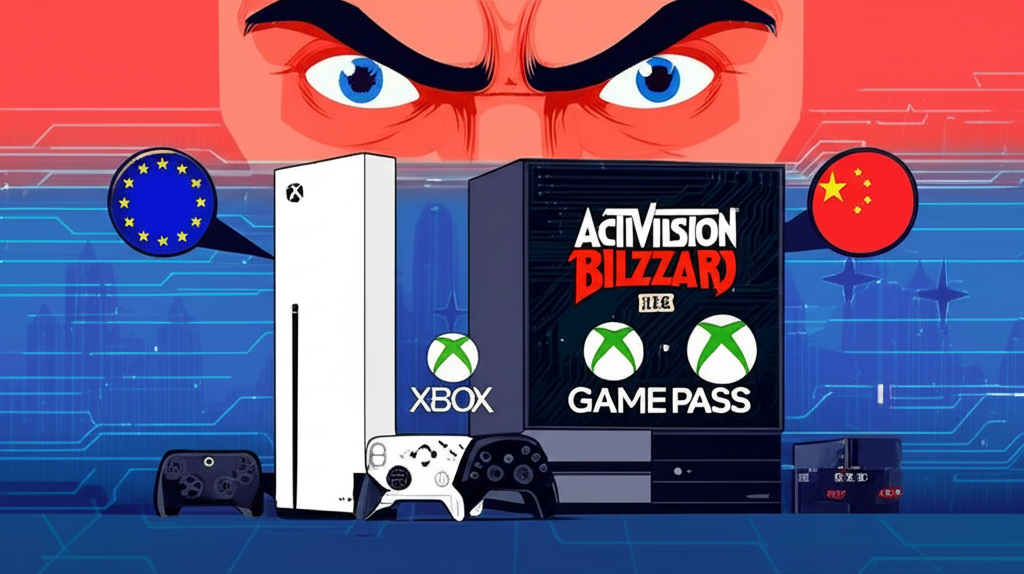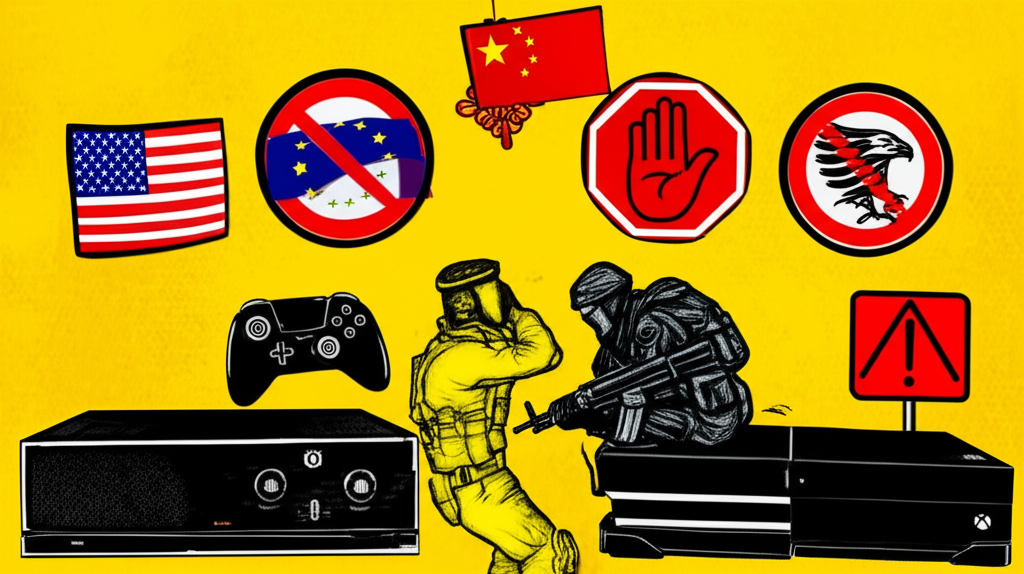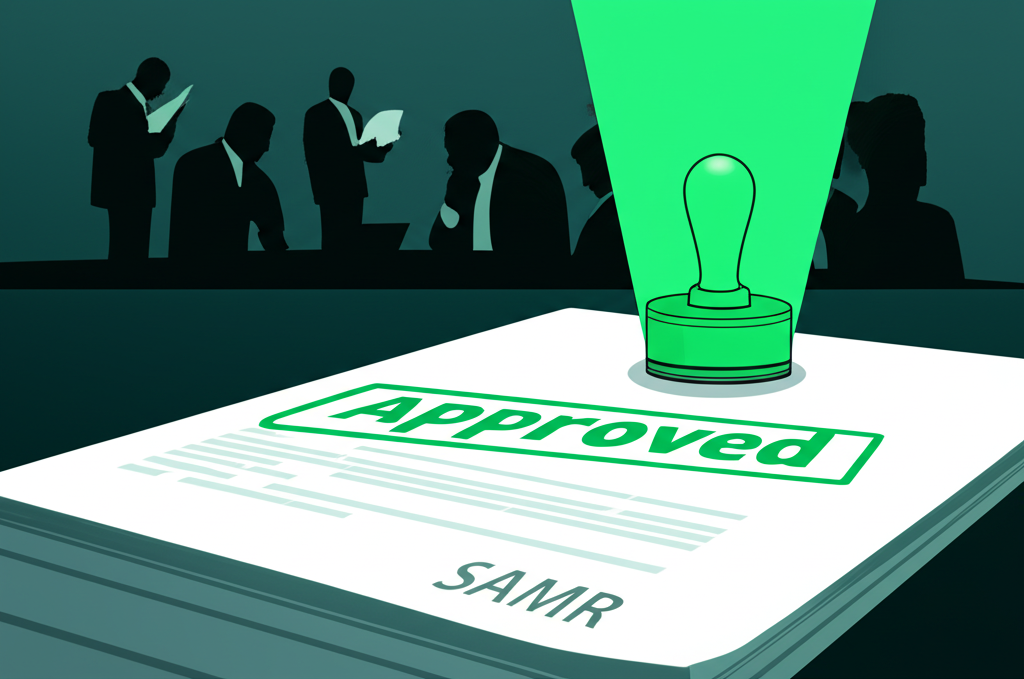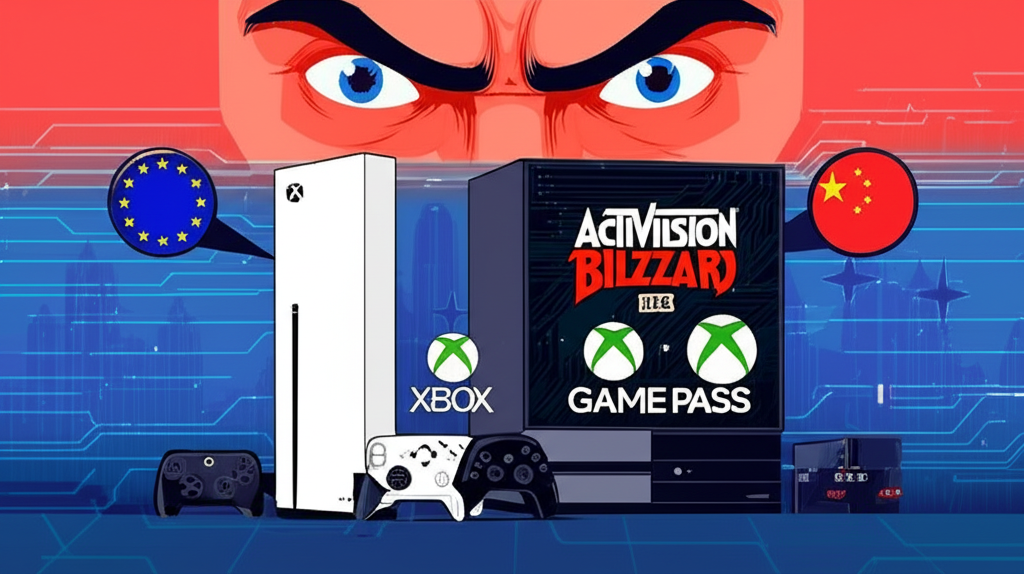Introduction: The $69 Billion Bet on Gaming

In January 2022, Microsoft unveiled a game-changing move: a $69 billion bid to acquire Activision Blizzard. This monumental transaction quickly became the most ambitious deal in gaming history, designed to supercharge Xbox’s ecosystem, accelerate the growth of Game Pass, and establish Microsoft as a dominant force in mobile gaming through King, the studio behind *Candy Crush*. Yet such a sweeping consolidation of power in the digital entertainment space inevitably triggered alarm bells. Regulators across continents launched investigations, questioning whether the merger would tilt the competitive balance in favor of one tech giant. The path to completion was anything but straightforward—marked by legal challenges, strategic pivots, and high-stakes negotiations with antitrust authorities. At the heart of this global drama stood two pivotal players: the European Union and China. Their decisions didn’t just influence the deal’s fate—they reshaped how regulators view market power in digital ecosystems. This article unpacks the complex regulatory odyssey, the concessions that cleared the way, and what this landmark acquisition means for the future of gaming.
The Initial Regulatory Gauntlet: Why Microsoft Faced Global Scrutiny

When Microsoft announced its intention to bring Activision Blizzard under its umbrella, the reaction from the regulatory world was immediate and intense. The core concern? Market dominance. Activision Blizzard isn’t just any game developer—it’s the creator of blockbuster franchises like *Call of Duty*, a cultural phenomenon with hundreds of millions of players and a critical driver of console sales. Sony, the maker of PlayStation, voiced strong opposition, warning that Microsoft could leverage its ownership to restrict access to *Call of Duty* or make it exclusive to Xbox and Game Pass, effectively weakening competition. Such moves could limit consumer choice and distort fair market dynamics.
Antitrust watchdogs in the European Union, the United Kingdom, the United States, and China all launched formal reviews. Each jurisdiction assessed the deal through its own legal lens, but the central theme was consistent: Could one company amass too much control over content, platforms, and distribution channels in the rapidly evolving gaming landscape? With cloud gaming emerging as a potential disruptor and subscription models reshaping player engagement, regulators were particularly alert to long-term risks. The scrutiny wasn’t just about current market conditions—it was about safeguarding competition in the future of interactive entertainment.
Early Alarms: The European Commission’s Antitrust Probe
Among the first to sound the alarm was the European Commission (EC). In November 2022, it issued a formal Statement of Objections, signaling deep concerns about the merger’s impact on competition. The EC’s preliminary assessment highlighted three key areas at risk: console and PC game distribution, multi-game subscription services like Game Pass, and the still-developing cloud gaming market. The commission feared that Microsoft could withhold Activision Blizzard’s games from rival platforms, especially in the cloud space, where infrastructure advantages could be exploited to lock out competitors.
The EC’s focus on cloud gaming was particularly telling. Unlike traditional console markets, where hardware barriers are high, cloud gaming promises access to AAA titles on any device with an internet connection. But if Microsoft controlled both the content and the underlying cloud infrastructure, it could potentially dominate this nascent sector before it even matured. To prevent this, the EC demanded robust, enforceable commitments. Microsoft’s response would need to go beyond vague assurances—it required concrete, time-bound licensing agreements that ensured fair access. This set the stage for months of negotiation, during which Microsoft had to demonstrate that the merger would not harm innovation or consumer choice in Europe’s digital market.
China’s Pivotal Role: A Swift Approval Amidst Global Delays

While regulatory reviews dragged on in Europe and the UK, China delivered a surprise. In May 2023, the State Administration for Market Regulation (SAMR) granted Microsoft unconditional approval for the Activision Blizzard acquisition—without requiring any behavioral remedies or licensing commitments. This decision came faster than most industry observers expected, especially given China’s increasingly strict stance on tech mergers in recent years.
SAMR’s assessment concluded that the merger would not substantially reduce competition within China’s gaming market. Unlike the EU or UK, Chinese regulators did not see Microsoft’s ownership of Activision Blizzard as a threat to local players or consumer interests. The absence of conditions suggested confidence that market forces and existing competition—especially from domestic giants like Tencent—would keep the ecosystem balanced.
This swift green light carried significant symbolic and strategic weight. As one of the world’s largest gaming markets, China’s approval lent credibility to Microsoft’s argument that the deal was not inherently anti-competitive. It also created momentum, subtly pressuring other regulators to reconsider their positions. By showing that a major economy could greenlight the deal without concessions, SAMR’s decision became a turning point in the global approval process.
The EU’s Green Light: Conditions, Concessions, and the Final Decision

Days after China’s approval, the European Commission followed suit—but with strings attached. In May 2023, the EC cleared the acquisition, accepting a set of binding commitments from Microsoft designed to preserve competition. The centerpiece was a 10-year licensing agreement guaranteeing that *Call of Duty* and other Activision Blizzard titles would remain available on rival cloud gaming platforms such as GeForce Now and Boosteroid. This addressed the EC’s primary concern: that Microsoft could use its cloud infrastructure to exclude competitors from accessing must-have content.
Beyond cloud gaming, Microsoft also committed to ensuring that *Call of Duty* would continue to be available on competing console platforms, including PlayStation. These obligations were not voluntary promises—they were legally enforceable under EU law, with the potential for fines if Microsoft failed to comply. The EC emphasized that these remedies went beyond the status quo, improving access for cloud gaming services in a way that benefited consumers and fostered innovation.
In its official statement, the European Commission noted that Microsoft’s commitments “fully address the competition concerns identified” and represent “a significant improvement for cloud game streaming.” The conditional approval underscored a broader shift in antitrust enforcement: rather than blocking transformative deals outright, regulators are increasingly willing to accept behavioral remedies that protect market dynamics while allowing innovation to proceed.
Here’s a summary of key regulatory milestones:
| Regulator | Date of Decision | Outcome | Key Conditions/Notes |
|—————–|——————|—————–|——————————————————————————————————————————————————–|
| European Commission | May 2023 | Conditional Approval | 10-year licensing for *Call of Duty* on rival cloud platforms; continued availability on non-Xbox consoles. |
| China (SAMR) | May 2023 | Unconditional Approval | No remedies or conditions imposed; based on assessment of no significant competitive harm in Chinese market. |
| UK CMA | April 2023 (initial), October 2023 (final) | Initially blocked, then approved after restructuring | Microsoft sold cloud streaming rights for Activision Blizzard games to Ubisoft for EEA and UK. |
| U.S. FTC | July 2023 | Legal challenge failed | Federal judge denied preliminary injunction; administrative case ongoing but no immediate block. |
The European Commission approved the acquisition in May 2023, subject to Microsoft’s commitments. This decision was a critical step forward for the deal, providing a clear path to completion in one of the most significant global markets.
Beyond EU and China: The Broader Global Regulatory Landscape
While the EU and China played decisive roles, the journey wasn’t complete without navigating hurdles in the UK and the US. The UK’s Competition and Markets Authority (CMA) initially blocked the deal in April 2023, citing risks to innovation in cloud gaming. The CMA argued that Microsoft’s control over both content and cloud infrastructure could create a dominant position, stifling competition before the market had a chance to mature.
Faced with this obstacle, Microsoft executed a strategic pivot: it restructured the deal by selling the cloud streaming rights for Activision Blizzard’s current and future PC and console games to Ubisoft. This agreement gave Ubisoft perpetual rights to license and stream these titles in the UK and European Economic Area, effectively removing Microsoft’s ability to monopolize cloud access. The revised structure satisfied the CMA, which provisionally approved the deal in September 2023 and granted final clearance in October.
In the United States, the Federal Trade Commission (FTC) pursued a more aggressive path, filing a lawsuit to block the merger. The FTC claimed the acquisition would harm competition across consoles, subscription services, and cloud gaming. However, in July 2023, a federal judge denied the FTC’s request for a preliminary injunction, allowing Microsoft to move forward. Though the FTC continued its administrative case, the court’s decision removed the most immediate legal threat in the US.
The divergent outcomes across jurisdictions highlight the fragmented nature of global antitrust enforcement. What one regulator sees as a threat, another may view as manageable. For multinational corporations, this means navigating a patchwork of legal standards—each requiring tailored strategies and concessions.
The Deal is Done: Microsoft Completes the Activision Blizzard Acquisition
After 20 months of regulatory battles, legal filings, and strategic negotiations, Microsoft officially closed its $69 billion acquisition of Activision Blizzard on October 13, 2023. The final hurdle was cleared when the UK’s CMA approved the restructured deal, removing the last major obstacle. With that, one of the most scrutinized mergers in tech history became a reality.
Microsoft CEO Satya Nadella celebrated the completion, stating, “We love games, and we believe gaming will continue to grow as people seek new ways to connect, play, and create.” Phil Spencer, head of Microsoft Gaming, emphasized the company’s commitment to supporting Activision Blizzard’s creative teams and expanding access to their iconic franchises. The acquisition instantly transformed Microsoft into one of the world’s largest gaming companies by revenue, placing it behind only Tencent and Sony in scale.
Major financial outlets confirmed the closure, marking a new chapter in the evolution of digital entertainment. Reuters reported on the completion of the $69 billion deal after the UK approval, solidifying the end of the regulatory saga.
Strategic Implications: What the Acquisition Means for Gaming and Microsoft
The integration of Activision Blizzard is more than a financial transaction—it’s a strategic repositioning of Microsoft in the global gaming ecosystem. The company now owns a treasure trove of intellectual property, including *Call of Duty*, *World of Warcraft*, *Overwatch*, and *Candy Crush*. These franchises are not just profitable—they’re cultural cornerstones with massive, loyal fanbases.
For Xbox and Game Pass, the impact is immediate. The addition of Activision Blizzard’s catalog makes Game Pass one of the most compelling subscription services in entertainment, rivaling Netflix in breadth and depth. Subscribers gain access to blockbuster titles on day one, strengthening Microsoft’s value proposition across PC, console, and cloud.
Equally significant is the mobile dimension. Through King, Microsoft gains a dominant foothold in mobile gaming—a sector that generates more revenue than console and PC gaming combined. This bridges a critical gap in Microsoft’s gaming strategy and opens new avenues for monetization and player engagement.
While Microsoft has committed to multi-platform availability for *Call of Duty* for at least a decade, the long-term implications remain fluid. The company now holds the strategic option to shift toward exclusivity or timed exclusivity, potentially reshaping competitive dynamics. For rivals like Sony, the pressure is mounting to invest more heavily in first-party content and subscription offerings.
More broadly, the deal signals a new era of consolidation in gaming. As content becomes a key differentiator, companies are likely to pursue further mergers to secure IP and expand reach. This trend could accelerate the rise of platform-centric ecosystems, where access to exclusive games drives user loyalty.
The Road Ahead: Challenges and Opportunities Post-Acquisition
Integrating Activision Blizzard is a monumental task. The company comprises dozens of studios, thousands of employees, and a complex web of creative and technical workflows. Cultural integration will be critical—Microsoft must balance centralized oversight with creative autonomy to maintain the quality and innovation that define Activision Blizzard’s franchises.
Technologically, the opportunity lies in leveraging Microsoft’s cloud infrastructure to enhance game performance, enable seamless cross-platform play, and support live-service models at scale. The synergy between Azure and Activision Blizzard’s online operations could unlock new capabilities in data analytics, player personalization, and anti-cheat systems.
There’s also potential for expansion into emerging areas like the metaverse and AI-driven gaming experiences. While still speculative, Microsoft’s vision of a connected digital future could find fertile ground in Activision Blizzard’s expansive virtual worlds.
Long term, the acquisition positions Microsoft to compete head-to-head with Tencent and Sony across every major gaming platform. It’s not just about owning content—it’s about controlling the ecosystem in which that content thrives.
Conclusion: A Landmark Deal Reshaping the Gaming Industry
The $69 billion acquisition of Activision Blizzard is more than a corporate milestone—it’s a watershed moment for the gaming industry. The regulatory journey, spanning the EU, China, the UK, and the US, revealed the complexities of enforcing competition law in a borderless digital economy. China’s swift, unconditional approval contrasted sharply with the EU’s demand for binding commitments and the UK’s requirement for structural divestment. Each decision reflected different philosophies on how to balance innovation, competition, and consumer welfare.
Ultimately, Microsoft’s persistence and flexibility paid off. By tailoring its approach to each jurisdiction, offering concessions where necessary, and maintaining a clear strategic vision, the company navigated one of the most complex regulatory landscapes in modern business history.
With the deal now complete, the focus shifts to execution. Can Microsoft integrate Activision Blizzard successfully? Will Game Pass become the dominant force in gaming subscriptions? And how will competitors respond? One thing is certain: the landscape of interactive entertainment has been permanently altered, setting a precedent for how tech giants expand their reach in the digital age.
What was the total value of Microsoft’s acquisition of Activision Blizzard?
Microsoft acquired Activision Blizzard for approximately $69 billion, making it one of the largest acquisitions in the history of the technology and gaming industries.
Which regulatory bodies in the EU and China were involved in approving the Microsoft-Activision Blizzard deal?
In the European Union, the European Commission (EC) was the primary regulatory body that approved the deal. In China, the State Administration for Market Regulation (SAMR) was responsible for granting approval.
What were the European Commission’s primary concerns regarding the acquisition, and how were they addressed?
The EC’s main concerns were that Microsoft could harm competition by:
- Foreclosing access to Activision Blizzard’s popular games, particularly “Call of Duty,” to rival console providers.
- Strengthening its position in multi-game subscription services and the nascent cloud game streaming market.
These concerns were addressed by Microsoft’s commitments to a 10-year licensing agreement for “Call of Duty” on rival cloud gaming platforms and ensuring key Activision Blizzard titles remained available on other console platforms.
Why did China approve the Microsoft-Activision Blizzard acquisition, and were there any conditions?
China’s State Administration for Market Regulation (SAMR) approved the acquisition based on its assessment that the merger would not significantly impede competition in the relevant markets. Notably, SAMR granted its approval unconditionally, without imposing any specific remedies or behavioral commitments on Microsoft.
When did Microsoft officially complete the acquisition of Activision Blizzard?
Microsoft officially completed the acquisition of Activision Blizzard on October 13, 2023, after overcoming various regulatory hurdles worldwide.
How did the UK’s Competition and Markets Authority (CMA) initially react to the deal, and what was its final stance?
The UK’s Competition and Markets Authority (CMA) initially blocked the deal in April 2023 due to concerns about its impact on cloud gaming. However, after Microsoft restructured the deal, selling the cloud streaming rights for Activision Blizzard’s games outside the EEA to Ubisoft, the CMA provisionally approved the revised acquisition in September 2023 and gave its final clearance in October 2023.
What are the strategic implications of the Activision Blizzard acquisition for Microsoft’s gaming division (Xbox and Game Pass)?
The acquisition significantly enhances Microsoft’s gaming portfolio with major IPs like “Call of Duty” and “World of Warcraft,” boosting the value and subscriber base of Xbox Game Pass. It also strengthens Microsoft’s position in mobile gaming through King (Candy Crush) and expands its overall market presence across console, PC, and mobile platforms.
Will Call of Duty remain available on PlayStation consoles after the acquisition?
Yes, as part of the concessions made to regulators, Microsoft committed to licensing “Call of Duty” to rival console platforms, including PlayStation, for at least 10 years, ensuring its continued availability.
What impact is the $69 billion acquisition expected to have on the broader gaming industry?
The acquisition is expected to:
- Intensify competition among platform holders (Microsoft, Sony, Nintendo).
- Drive further consolidation in the gaming industry.
- Potentially accelerate the growth of subscription services and cloud gaming.
- Influence strategies for content exclusivity and multi-platform releases.
Who are the key figures involved in leading Microsoft’s gaming strategy post-Activision Blizzard acquisition?
Key figures include Satya Nadella (Microsoft CEO), Phil Spencer (CEO of Microsoft Gaming), and the leadership teams from both Xbox and the newly integrated Activision Blizzard studios, working together to realize the strategic vision of the combined entity.

留言